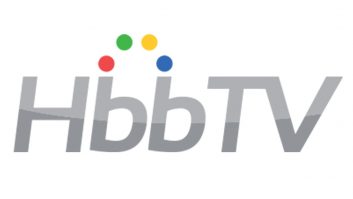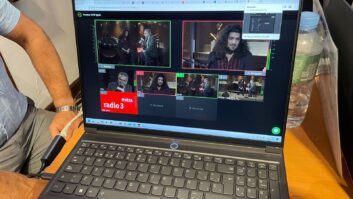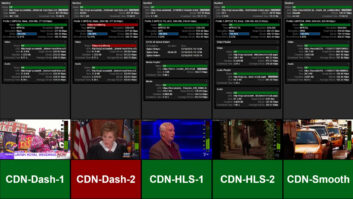Hybrid Broadcast Broadband Television (HbbTV), the standard designed to enrich broadcast channels with interactive services over the internet, is expected to continue to grow in popularity with the advent of a new version. The simplicity of a single point of access, the ease in rolling out services, and the enthusiastic uptake by the industry are fuelling the deployment throughout Europe and Asia.
HbbTV V2 will be finalised towards the end of the year, supporting HTML5, MPEG DASH, HEVC and synchronisation with other connected devices. These innovations are key in solidifying the HbbTV’s place in the market and continued growth of services.
The support of HTML5 in the new HbbTV version is a no-brainer as it is the de facto standard in web technology. HbbTV makes use of the HTML5 browser already found in my connected TVs to overlay interactive interfaces on the live broadcast channel. Using standard web techniques is a cornerstone of HbbTV and the use of HTML5 brings functionality to a new level while retaining ease for application development. HTML5 is well known in the development teams of the content providers and will enhance the available toolbox they can use for the creating the interactive services.
The expanded support for MPEG DASH will make it possible to now deliver both live and on-demand content and even expanding the quality to UHD using HEVC. This will facilitate an enhanced quality of experience in the catch-up services and alternative live streams during sport events.
These might, for example, be shown picture-in-picture over the broadcast signal. Support of common encryption via DASH makes it possible to use DRM opening the possibility for paid services. The HbbTV V2 specification will refer to the recently published DVB MPEG-DASH specification as well as the important ongoing DVB work related to synchronised TV-services in the multiscreen ecosystem.
Migrating to V2
HbbTV’s success is based on profiling of existing widely used technologies rather than defining new techniques. This approach lowers the implementation costs for both the consumer electronics (CE) manufacturer and the content provider. Profiling limits the test implications for CE vendors. Content providers have easy access to qualified developers, and can maximise the reuse of applications for other delivery platforms.
The first HbbTV services were launched in 2009 and its proven these services are more cost effective than for dedicated mobile applications. We note from GfK figures that 92% of the televisions currently sold inGermany are HbbTV compliant. This figure is representative of the HbbTV deployment in other territories.
We also note that markets currently supporting alternatives to HbbTV are proposing migrations to HbbTV V2: UK and Italy have announced plans to migrate to HbbTV. These moves will fill in the blanks in a European HbbTV map, but it doesn’t stop there. Freeview Australia will launch HbbTV applications shortly, representative of an uptake in the Asian market.
The hybrid standard flourishes particularly well in DVB-T(2) countries or with satellites services for a global reach. Regional cable operators pick up the standard for their interactive services. In heavily cabled countries, the larger cable operators are also starting to facilitate HbbTV applications on their networks. The success of the HbbTV standard prompted the Open IPTV Forum this year to transfer all its technical activities with relation to standardisation to the HbbTV Association.
A cross-industry service
The single point of access is the strongest proposition of HbbTV services. When an HbbTV enabled device is connected to the internet and the audience is watching a channel enriched with HbbTV, a message notifies the viewer that they can access an interactive portal via the red button. Even when the device is not connected to the internet, a message embedded in the DVB broadcast signal can encourage the user to avail of the full HbbTV service by connecting his device to the internet.
Only when the appropriate DVB signal does not reach the HbbTV connected device, which happens when a set-top box or CI-Plus card is used that does not process the HbbTV-signal, interactivity will not be available on that screen. Thus HbbTV can incentivise the consumer to connect his device – a valuable cross-industry service.
HbbTV uses the best of both worlds, the efficiency of broadcast technology to deliver highly quality pictures to a larger audience and the capability of internet as an interactive return channel. Combine the two, and the viewer experiences linear merged with on-demand content.
Broadcaster experience shows that the most popular services are the catch-up services and vast media archives that become available on the big screen in the home. Once found, people come back regularly to watch new content.
But one finds a vast richness of interactive employments in the current HbbTV propositions, for example: enriched Electronic Program Guide (EPG) information, interactive commercial propositions, voting results that are immediately used in the live programme, related content propositions, visual radio channels, overlays of social media, personalisation offerings, second screen integration and even links to services of other broadcasters and the ability to change to their channel.
Modern broadcasters don’t just deliver linear channels. Their content proposition is a combination of linear broadcast channels with integrated application signalling to their on-demand portals allowing them to engage further in the direct communication with their audience. Interactivity is nowadays an intrinsic part of the broadcast content proposition.




